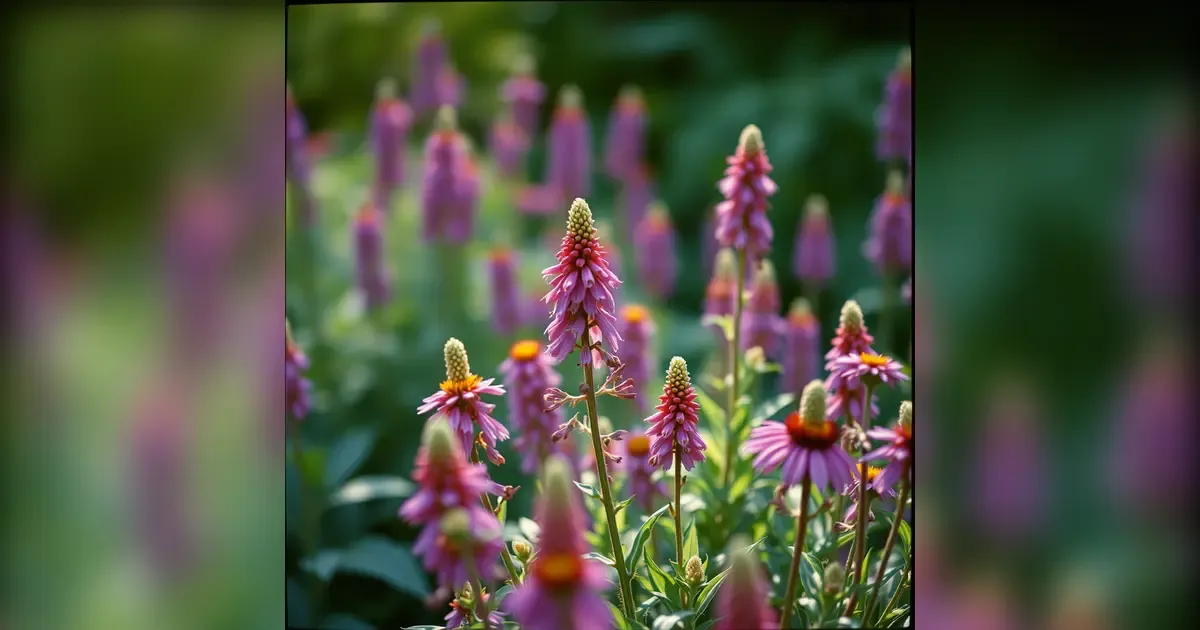This comprehensive guide will explore the best perennials for shaded areas, offer practical gardening tips, and help you create a thriving shade garden that requires little hassle.
Gardening in shaded areas can often feel like a daunting task, especially if you’re used to sunny spots where plants thrive with minimal effort. However, with the right approach and a selection of hardy perennials, even the shadiest corners of your garden can be transformed into lush, vibrant spaces. Easy-care perennials are perfect for these low-light environments, providing color and texture with minimal maintenance. This comprehensive guide will explore the best perennials for shaded areas, offer practical gardening tips, and help you create a thriving shade garden that requires little hassle.
Understanding Shade in the Garden
- Types of Shade
Shade in a garden isn’t a one-size-fits-all concept; it can vary greatly depending on the location and surrounding structures. Understanding the different types of shade is crucial for selecting the right perennials.
- Light Shade: Light shade occurs when sunlight filters through, such as under a canopy of deciduous trees or on the east side of buildings. In these conditions, plants receive dappled sunlight or only a few hours of direct light each day.
- Partial Shade: Partial shade is where plants get some direct sunlight but are mostly shaded. This is common in areas that receive morning sun but are shaded in the afternoon, or vice versa.
- Full Shade: Full shade is characterized by little to no direct sunlight, often found under dense evergreen trees or on the north side of buildings. This area can still receive reflected or filtered light but is predominantly dark.
- Why Shade-Tolerant Perennials?
Shade-tolerant perennials are specially adapted to thrive in low-light conditions. Unlike sun-loving plants, these perennials have evolved to make the most out of minimal light. They often have features such as larger leaves or reflective surfaces to maximize light absorption. Additionally, they generally require less frequent watering and can help reduce the need for chemical inputs, making them ideal for low-maintenance gardens.
Top Easy-Care Perennials for Shaded Areas
Hostas: The Shade Garden Staple
Hostas are among the most popular perennials for shaded areas due to their adaptability and striking foliage. They come in a range of sizes, shapes, and colors, making them versatile for various garden designs.
- Varieties: Hostas vary from small, compact types like ‘Blue Mouse Ears’ to large specimens like ‘Sum and Substance’. Varieties also include different leaf colors and textures, such as the blue-green ‘Halcyon’ or the gold-toned ‘Gold Standard’.
- Care Tips: Hostas prefer well-drained, moist soil enriched with organic matter. They thrive in light to full shade and generally require minimal maintenance. Regular watering and a layer of mulch will keep their roots cool and moist. Hostas are also quite resilient against pests and diseases but can occasionally attract slugs.
- Design Uses: Hostas work well as ground covers, in border plantings, or as focal points in shade gardens. Their large leaves create a dramatic effect and can be combined with other shade-loving plants for a lush look.
Ferns: Adding Texture and Elegance
Ferns are excellent for creating a lush, woodland feel in shaded gardens. Their delicate, feathery fronds add texture and movement, making them a versatile choice for many garden styles.
- Varieties: Common ferns for shade include the Christmas fern (Polystichum acrostichoides), the maidenhair fern (Adiantum), and the ostrich fern (Matteuccia struthiopteris). Each has its own unique form and texture.
- Care Tips: Ferns prefer moist, well-drained soil and benefit from a layer of mulch to retain moisture. They generally do well in full to partial shade and require minimal care. Ensure good air circulation to prevent fungal diseases.
- Design Uses: Ferns are ideal for filling in gaps in shady areas and creating a woodland or tropical look. They pair beautifully with other perennials and can be used as a backdrop or ground cover.
Astilbes: Colorful and Hardy
Astilbes are known for their vibrant, plume-like flowers that add a burst of color to shaded areas. They come in various colors, including pink, red, white, and purple.
- Varieties: Some popular varieties include ‘Fanal’ with its deep red flowers, ‘Pumila’ with its soft pink blooms, and ‘White Gloria’ with pristine white flowers. There are also dwarf varieties for smaller spaces.
- Care Tips: Astilbes thrive in moist, well-drained soil and prefer light to partial shade. They are relatively low-maintenance but benefit from consistent watering, especially during dry spells. Mulch helps retain soil moisture and keeps the roots cool.
- Design Uses: Astilbes are great for adding vertical interest and color to shady spots. They work well in borders, along walkways, or in mixed perennial beds.
Bleeding Hearts: Romantic and Resilient
Bleeding Hearts are renowned for their heart-shaped flowers, which dangle from arching stems. They add a touch of romance and charm to any shaded garden.
- Varieties: The traditional Dicentra spectabilis has classic pink heart-shaped flowers, while the ‘White Gold’ variety offers white blooms. The ‘King of Hearts’ variety is a compact option with pink flowers.
- Care Tips: Bleeding Hearts prefer cool, moist soil and thrive in partial to full shade. They require regular watering but are otherwise low-maintenance. After blooming, they go dormant in the summer, so consider planting them with other perennials that fill in the space.
- Design Uses: Bleeding Hearts are ideal for adding a delicate, romantic touch to shady borders or woodland gardens. They work well in combination with ferns and Hostas for a lush, layered effect.
Solomon’s Seal: Graceful and Low-Maintenance
Solomon’s Seal is a graceful perennial with arching stems and hanging tubular flowers. It’s a perfect choice for adding elegance to shady spots.
- Varieties: The classic Polygonatum biflorum has small, bell-shaped white flowers, while the ‘Variegatum variety features striking variegated leaves. ‘Dragon’s Breath’ offers unique red-flushed foliage.
- Care Tips: Solomon’s Seal prefers well-drained, moist soil and does well in full to partial shade. It requires minimal care and can tolerate dry conditions once established. Mulching helps maintain soil moisture and temperature.
- Design Uses: Solomon’s Seal is excellent for creating a natural, woodland look. Its graceful arching stems make it a great addition to shady borders or underplantings.
Tips for Growing Perennials in Shade
- Soil Preparation
The foundation of a successful shade garden is healthy soil. Even shade-tolerant perennials need well-drained, nutrient-rich soil to thrive.
- Improving Soil: Incorporate organic matter such as compost or well-rotted manure to improve soil structure and fertility. This helps with moisture retention and provides essential nutrients.
- Testing Soil: Consider testing your soil to determine its pH and nutrient levels. Amendments can be made based on the results to ensure optimal growing conditions for your perennials.
Watering and Mulching
- Proper watering and mulching are crucial for maintaining a thriving shade garden.
- Watering Needs: Shade gardens typically retain moisture better than sunny areas, but it’s important to monitor the soil moisture regularly. Water plants during dry spells, ensuring the soil is moist but not waterlogged.
- Mulching Benefits: Apply a layer of organic mulch, such as shredded leaves or bark, around your perennials. Mulch helps retain soil moisture, regulate temperature, and suppress weeds. It also adds nutrients to the soil as it decomposes.
- Managing Pests and Diseases
Shaded areas can sometimes be more prone to pests and diseases due to cooler, damp conditions.
- Pest Control: Watch for common pests like slugs and snails, which can damage shade-loving plants. Organic control methods include handpicking or using traps. Insecticidal soaps can also be effective for some pests.
- Disease Prevention: Ensure good air circulation around your plants to prevent fungal diseases. Remove any dead or diseased foliage promptly and avoid overhead watering to reduce humidity around the plants.
- Choosing the Right Perennials
Selecting perennials that are well-suited to your garden’s specific shade conditions is key to success.
- Match Plants to Light Conditions: Consider the amount of light each plant will receive in your garden. Some perennials prefer light shade, while others are better suited for deeper shade. Match the plant’s needs to the light conditions in your garden.
- Consider Soil and Moisture Requirements: Choose plants that match your soil type and moisture levels. Some shade perennials prefer moist, well-drained soil, while others can tolerate drier conditions.
- Enhancing Your Shade Garden
Combining Perennials for Visual Interest
Creating a visually appealing shade garden involves mixing and matching different types of perennials.
- Height and Texture: Combine plants of varying heights and textures to create a layered effect. For example, pair tall Astilbes with low-growing Hostas and Ferns for a dynamic look.
- Color Harmony: Choose perennials with complementary colors to create a harmonious garden design. Consider the seasonal color changes of your plants to ensure year-round interest.
- Incorporating Seasonal Interest
To keep your shade garden attractive throughout the year, incorporate plants that offer seasonal interest.
- Spring Blooms: Early bloomers like Bleeding Hearts and Solomon’s Seal provide spring color and interest.
- Summer Color: Astilbes add vibrant color in the summer, while Hostas offer lush foliage.
- Fall and Winter Interest: Consider adding evergreen ferns or ornamental grasses to provide structure and interest during the fall and winter months.
- Creating a Garden Design
Designing a shade garden involves thoughtful planning and placement of perennials.
- Garden Layout: Plan the layout of your garden to ensure a balanced arrangement of plants. Consider the growth habits of each perennial and their spacing needs.
- Incorporate Features: Add garden features such as pathways, seating areas, or garden art to enhance the overall design of your shade garden.
Common Challenges and Solutions
- Managing Heavy Shade
Some shaded areas receive very little light, which can limit plant options. To address this, choose perennials specifically adapted to deep shade and consider adding reflective surfaces or artificial light to enhance light levels.
- Dealing with Dry Shade
Dry shade can be challenging, especially under large trees with extensive root systems. Opt for drought-tolerant perennials and use mulch to retain soil moisture. Regular watering and soil improvement can also help.
- Addressing Soil Issues
Shade gardens can have compacted or poorly drained soil. Improve soil quality by adding organic matter and using raised beds if necessary. Ensure proper drainage to prevent waterlogging.
Conclusion
Creating a beautiful shade garden is entirely achievable with the right perennials and a bit of planning. Easy-care perennials like Hostas, Ferns, Astilbes, Bleeding Hearts, and Solomon’s Seal offer stunning options for low-light areas, adding texture, color, and elegance with minimal maintenance. By understanding your garden’s specific shade conditions, preparing the soil, and selecting suitable plants, you can transform shaded spots into vibrant, low-hassle havens. With these tips and plant suggestions, your shade garden can become a lush, inviting retreat that enhances your outdoor space throughout the seasons.


























